Getting into a car accident (no matter how big or small the incident) – can be very stressful for all parties involved. With that in mind, car accidents can affect people on both the physical level and mental level as it completely disrupts their logic in the moment of the accident (and moments after). After an accident happens, there are a number of items to do immediately in order to protect yourself (both physically and from a legal standpoint). The Car Accident Law Firm Reyes Law has provided guides to help you know what to do after a car accident.
Contents
- 1. For everyone’s safety and well-being, check with all the passengers that were present for any injuries
- 2. Safely get out of the way of traffic
- 3. Contact the police and/or proper emergency responders if severe injuries have occurred in the accident
- 4. If the accident involved another driver, gather important information from them as well as any witnesses
- 5. Obtain police officer’s information
- 6. Write down the car accident information
- 7. Take as many pictures as you can of the car accident. Be sure to remain safe in doing so
- 8. Make an appointment to see your doctor
- 9. Contact your insurance company and/or a car accident lawyer
- 10. Try to draw an image of or in clear detailed words a picture/re-creation of the accident to use as supplemental evidence
1. For everyone’s safety and well-being, check with all the passengers that were present for any injuries
Call 911 for help if you or anyone in any vehicle needs medical attention. Do not try to move anyone who may be unconscious whether with you or in another vehicle, unless absolutely necessary. Often times, moving a person after a serious injury has occurred can aggravate or worsen an injury. If you must move injured people due to an emergency situation, make sure to keep their head and neck supported and ask for help from other nearby parties if you need it to ensure the person’s body remains as stable as possible.
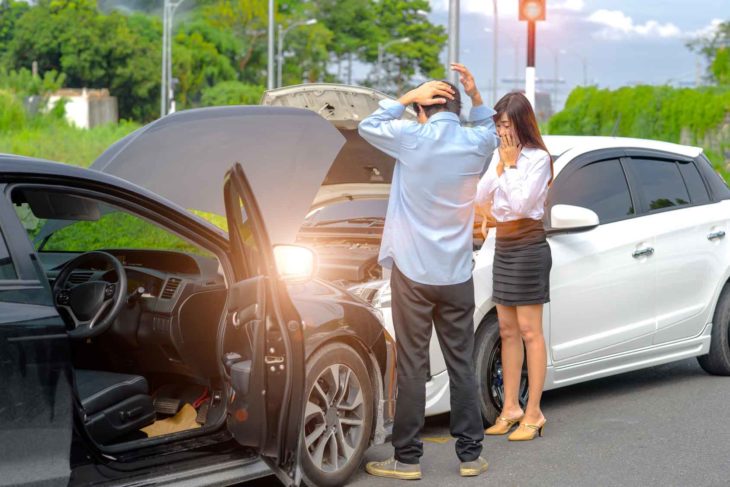
Source: Dale R. Rose
2. Safely get out of the way of traffic
Get yourself to a safe area, such as a sidewalk or parking lot, but remain at the scene of the car accident.
In the event that the car accident is severe enough that the car will no longer operate, raise the hood of your car and turn on your hazard lights to warn other drivers ahead of time. Your safety is most important.
3. Contact the police and/or proper emergency responders if severe injuries have occurred in the accident
Be sure to call for emergency help if the auto accident involves any damage, personal injury, or death, especially in instances of hit-and-run incident. An emergency responder will initiate appropriate assistance such as ambulance, police, or highway patrol to the scene of the car accident.
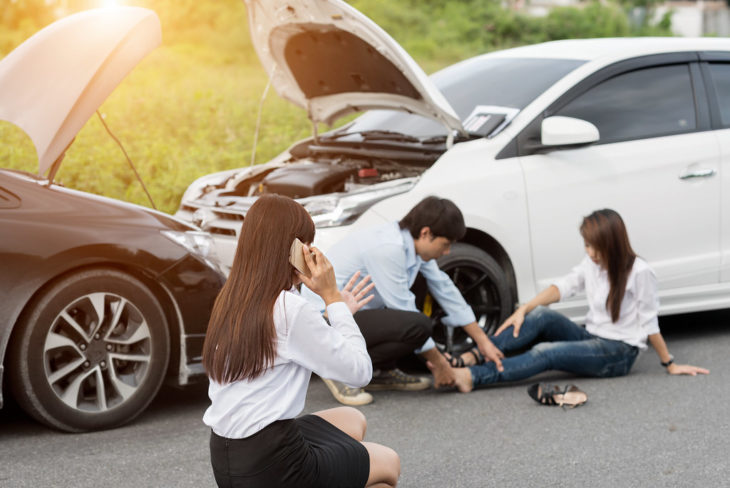
Source: Fiveprime
4. If the accident involved another driver, gather important information from them as well as any witnesses
It is important to remember to gather the following information from all those involved in the accident (including witnesses): full name(s), complete address, phone numbers (home, cell, etc). These basic contact details will be useful later.
It is also very important to exchange car insurance information with the other driver – as this will protect parties on both sides.
5. Obtain police officer’s information
Don’t forget to get the name, badge number, and city of the police officer who arrives at the scene of the accident.
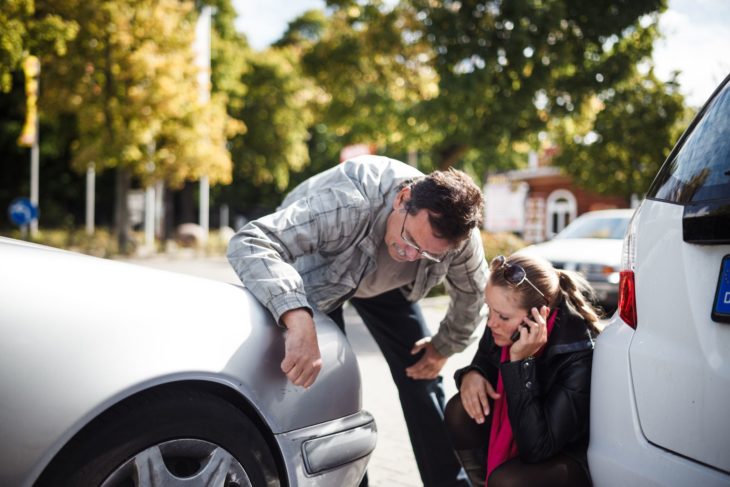
Source: The Balance
6. Write down the car accident information
It is very important to take down the date, time, make, model, year, car description, color of the vehicle, state, as well as the other vehicle’s license plate number.
7. Take as many pictures as you can of the car accident. Be sure to remain safe in doing so
When taking pictures, keep these tips handy. Be sure to photograph:
– the driver of the vehicle
– all vehicles involved in the accident
– any damage to the surrounding area caused by the accident itself
– photographs of any other damage that would be important to submit to your insurance agent
You can never take too many photos of a car accident. It is a good idea to keep a disposable camera in your glove compartment or trunk of your vehicle in case of an emergency. If there are no other cameras available, then you should use a cell phone camera if you have one. Make an extra effort to get photos. It’s a benefit to have an abundance of pictures since they may help in the insurance company claims process to determine how much you should be paid for your injuries.
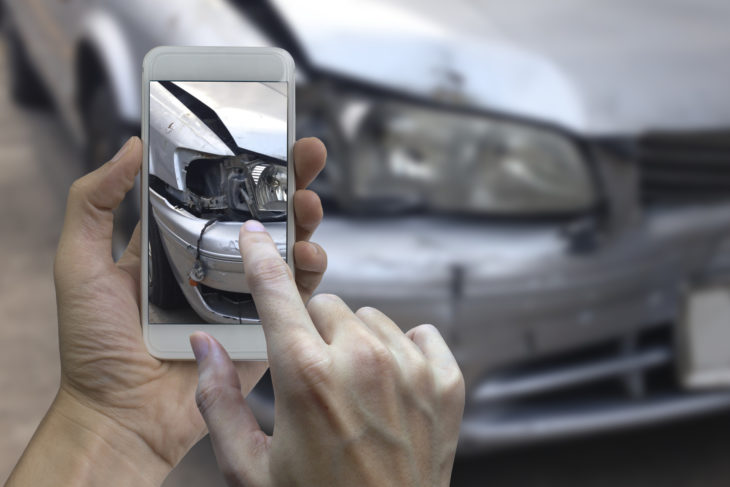
Source: US News & World Report
8. Make an appointment to see your doctor
After a car accident, it is crucial to have your doctor give you a checkup – whether your injuries are minor or major. More often then not, the accident injuries are immediately noticeable. But the major concern is for those injuries that are not noticeable and may get worse if not treated immediately. This is why it is always wise to see your doctor make sure that you are okay.
If an ambulance arrives at the scene of the accident and an ambulance ride is offered, even if you’re unsure as to whether or not you’re injured, you may want to take the ambulance ride to be on the safe side.
9. Contact your insurance company and/or a car accident lawyer
Make sure you are aware of all aspects of your insurance policy so that there are no unpleasant surprises. Call your insurance company immediately after the accident to file a claim. When one or more car insurance companies are involved, they may try to pay out as little as they can get away with in order to protect their premiums. If you have any questions or have problems working with the insurance company to settle your claim, please talk to your car accident lawyer as soon as possible. If you need more money to pay bills, etc., they can help communicate with the insurance company or even file a suit on your behalf.
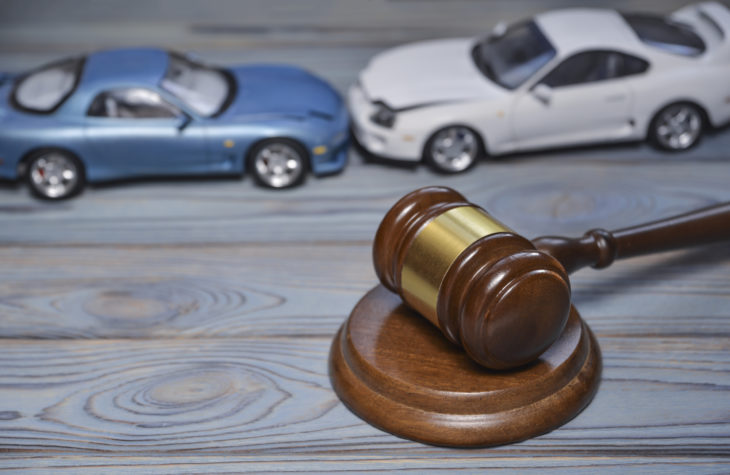
Source: Personal Injury Attorney Spokane WA
10. Try to draw an image of or in clear detailed words a picture/re-creation of the accident to use as supplemental evidence
Before your memory gets fuzzy, write down a visual aid of how the auto accident happened. This will help you describe your car accident later.
Hopefully, these guides will help you know what to do after a car accident in the event you are ever involved in one.
